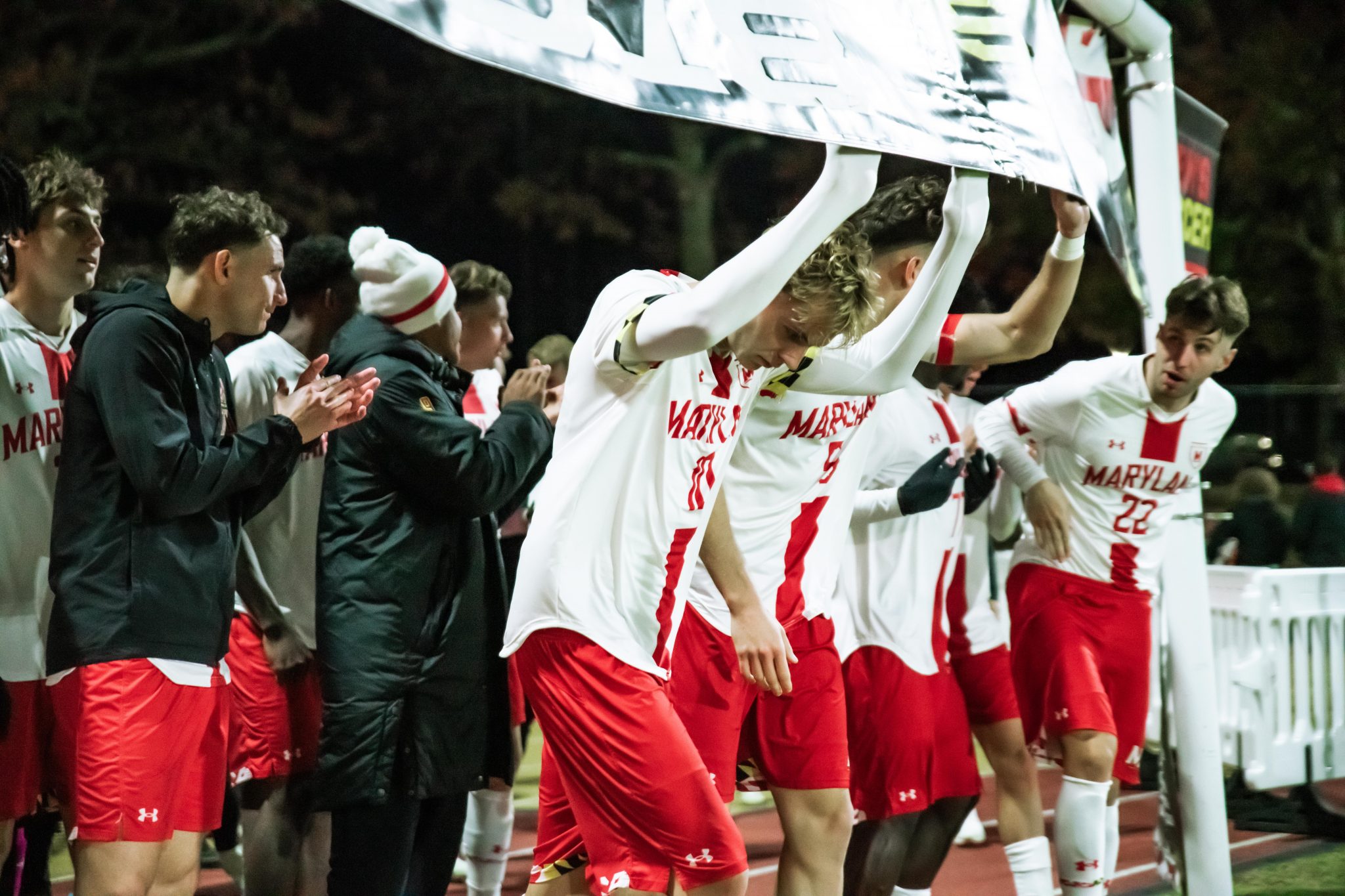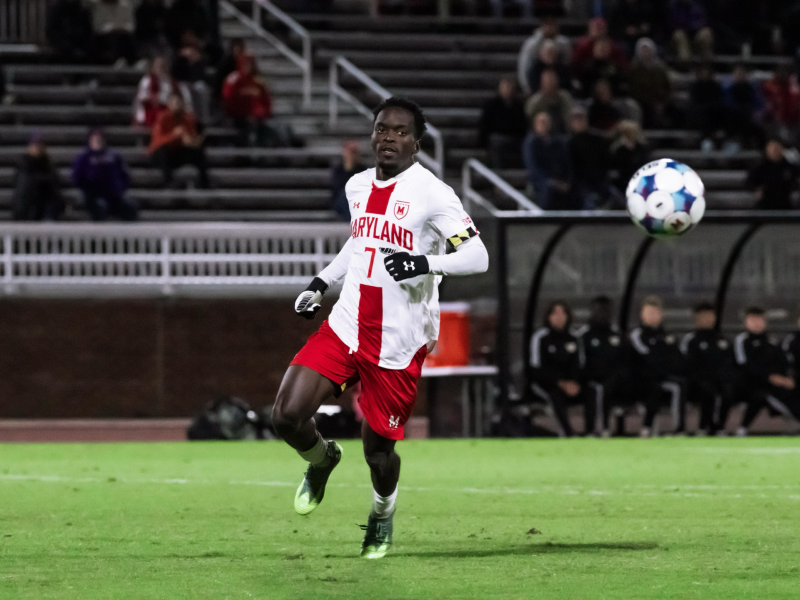Excellence is the expectation for Maryland men’s soccer.
Sasho Cirovski has instilled that as the program’s identity since taking over as head coach in 1993. His three national championships and lineage of conference titles between the ACC and Big Ten indicated such. But much of that hardware was earned during the 2000s and 2010s.
Entering the year, Maryland’s 2022 Big Ten regular season title marked its lone trophy of the decade. The Terps added a second conference championship this past weekend, and the undefeated No. 1 team in the country seems poised to capture even more hardware.
With the Big Ten tournament starting on Wednesday, The Diamondback compiled four stats that encapsulate Maryland’s historically dominant regular season.
78: The number of seconds Maryland spent trailing
Yes, that says seconds, not minutes.
When the Terps visited Penn State in late September, opposing forward Christian Dionne scored in the 85th minute, giving his side a 2-1 lead. Maryland defender Lasse Kelp converted a match-equalizing free kick 78 seconds later.
That minute and 18 seconds — out of 1,350 total game minutes — was the only time Maryland trailed all season.
The Terps never fell behind in their nine matches at Ludwig Field — the same place where they’ll be hosting the Big Ten tournament. If Maryland earns a top-four seed in the NCAA tournament, it can make a run to mid-December’s College Cup without leaving College Park between now and then.
16: Combined goals between Sadam Masereka and Stephane Njike
The striker position was an area of concern entering the season.
Colin Griffith and Max Rogers shared that role a year ago, scoring a combined 10 goals. Griffith was indefinitely sidelined to start the year as he recovered from offseason surgery — with Cirovski saying in October that he doesn’t expect him to play at all this year — while Rogers ran out of eligibility.
[No. 1 Maryland men’s soccer clinches Big Ten title with 4-3 win over Michigan State]
The Terps still don’t have a natural striker in their starting lineup, but the production from wingers Masereka and Njike has quelled those concerns.
Masereka has made noticeable strides in his second season at the Division I level, scoring a team-high nine goals. After scoring against Maryland in last year’s NCAA tournament, Njike has delivered a seven-goal, seven-assist sophomore season.
The pair inadvertently work in tandem despite occupying different flanks. When one draws several defenders to their respective wings, it often creates space for the other to make runs into the 18-yard box.
+28: Maryland’s goal differential
No statistic quite encapsulates Maryland’s complimentary play this season than its goal differential. The Terps lead the Big Ten in that category and are tied for the sixth-best mark in the country.
It’s also notable by program standards.
Maryland’s 2016 team — Cirovski’s only other undefeated regular season group — built its identity on offensive efficiency. Those Terps scored 53 goals in 21 matches.
[Maryland men’s soccer’s goalkeeper is turning in a historically impressive season]
To this point, the Terps’ 2025 goals a game clip of 2.67 is actually higher, and they’ve managed that while holding opponents under a score per match, which the 2016 squad failed to do.
1,350: The minutes centerbacks Kelp and Tristen Rose have played together
While Cirovski leaned on his depth to rotate his forwards and midfielders, he shied away from using reserves at center back. In fact, Kelp and Rose were Maryland’s only two non-goalkeepers to play every single minute this season.
The seniors were unproven at the Power Four level when the year began. Kelp transferred from nearby UMBC, while Rose arrived from Division II Charleston.
Kelp said he and Rose have built chemistry on the pitch by having similar interests off of it. They’ve validated that sentiment, forming arguably the best center back tandem in the Big Ten.
Maryland has allowed a conference-low 12 goals while keeping eight clean sheets overall — partially a testament to the stability that Kelp and Rose have provided.
Maintaining that level of consistency at perhaps the most physically demanding position on the field is bound to be a determining factor in the Terps’ postseason run.



